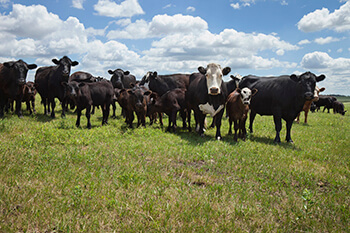Spring Reseeding Options for Forage
Feb 10, 2020

Spring is a good time to replenish a lost forage stand or to establish a new stand by interseeding perennials or annuals into existing grass. Your local Co-op carries some great options from Allied Seed, a company partially owned by the Co-op system including FSG 506 Orchardgrass, Select Tall Fescue, and Derby Timothy.
To improve existing orchardgrass stands or establish a new one, FSG 506 Orchardgrass, an early- to medium-maturing variety, provides improved vigor, high yield potential and excellent disease resistance.
Select Tall Fescue, a low endophyte variety, is an excellent choice for establishing a new fescue stand. This low-endophyte variety eliminates concerns that grazing animals will develop fescue feeding disorders.
Derby Timothy is an early maturing variety that provides quicker spring green-up and improved summer re-growth
compared to other varieties.
Here’s seven steps to successful pasture reseeding.
To improve existing orchardgrass stands or establish a new one, FSG 506 Orchardgrass, an early- to medium-maturing variety, provides improved vigor, high yield potential and excellent disease resistance.
Select Tall Fescue, a low endophyte variety, is an excellent choice for establishing a new fescue stand. This low-endophyte variety eliminates concerns that grazing animals will develop fescue feeding disorders.
Derby Timothy is an early maturing variety that provides quicker spring green-up and improved summer re-growth
compared to other varieties.
Here’s seven steps to successful pasture reseeding.
- Take a soil test. Apply fertilizer based on these test results but NOT before you have planted the seed, and it is 2 to 3 inches tall. Fertilizing before you plant will only feed remaining weeds. A pH of 6.3 or above is preferable.
- If you have weed issues remove them before you plant.
- If your stand is less than 60 percent of the overall desired forage, consider killing out the existing stand and starting over with bare ground.
- While fall is the optimum time for establishing cool season forages, spring will work if you plant by mid-March in Tennessee.
- Don’t skimp on seed. Plant 125 percent of the recommended rate per acre. Do it right the first time.
- Plant when good moisture is available.
- The last and extremely important tips is to plant at the right depth — from 1/8 to 1/4 of an inch.